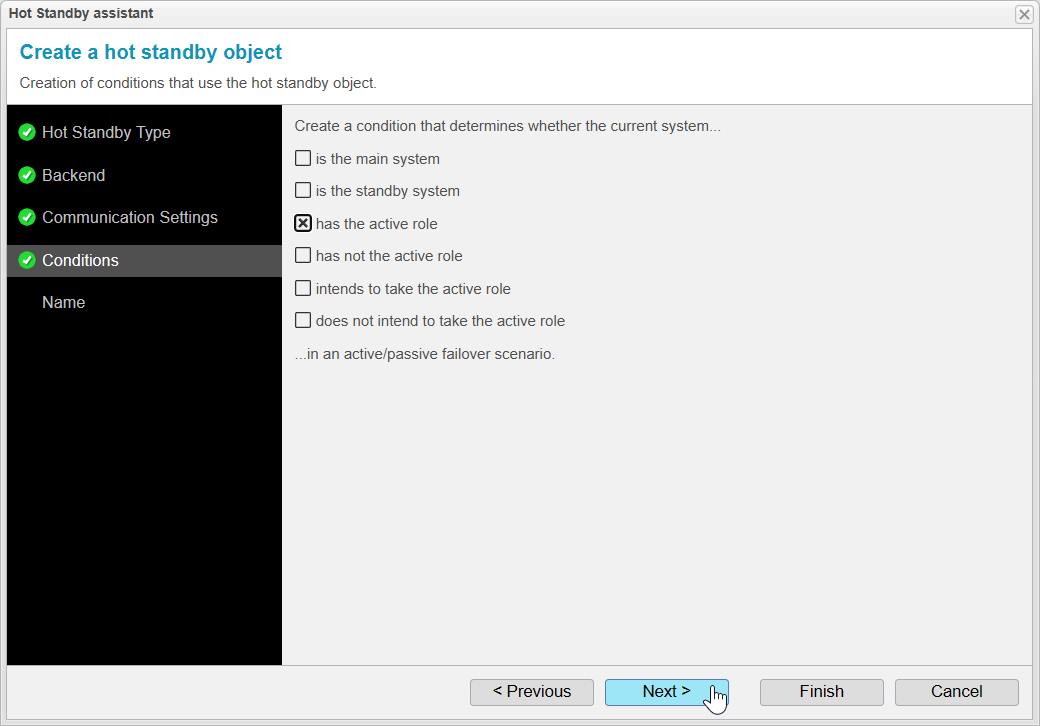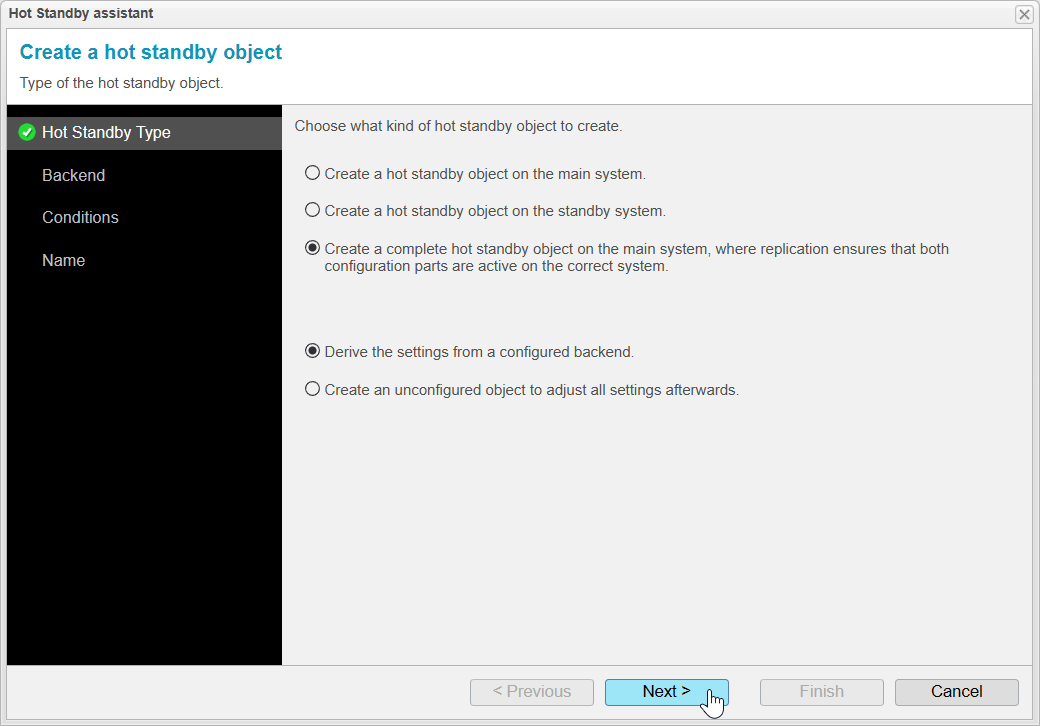Hot Standby Assistant
Hot Standby Type
In the Hot Standby Type step, select the option Create a complete hot standby object on the main system, where replication ensures that both configuration parts are active on the correct system. The other options listed above are used if you want to utilize Hot Standby without replication.
The setting Derive the settings from a configured backend should remain as is, and the option create an unconfigured object to adjust all settings afterwards is usually not needed.
Click to proceed to the next step.
Backend
In the Backend step, we must select the system whose connection will be used for this Hot Standby. Since in our configuration only two systems are interconnected, there is only one system available for selection. This setting is important for allowing anynode to utilize the certificates and connection information from the existing connection.
Choose Replica.


Communication Settings
In the Communications Settings Step, typically no adjustments are needed because these settings are derived from the connection between the two systems.
Click to move on.


Conditions
In this step, you can select the Conditions that will be needed later. In our case, only the Condition has the active role is required. This rule is necessary for changing the IP address according to the system's status during handover and recovery.
Click to proceed to the next step.
Note that from version 4.12 onwards, you can also generate conditions retrospectively, even if the hot standby was created before version 4.12.


Name
Here, you specify the name of the Hot Standby. In our configuration, the default name is sufficient. If you have more than two systems interconnected, it may be advisable to customize the name of the Hot Standby for better clarity.
Click to complete the assistant.
Commit Configuration
After completing the Hot Standby Assistant, a new Hot Standby will appear. You will notice that several points still show NOT COMMITED because the configuration is only replicated to the Replica System after committing. Only then can a link between the systems for Hot Standby be established. The detailed functions of Hot Standby will be discussed more thoroughly in the next chapter.
Click to confirm the configuration.


Hot Standby Overview
After the commit, the status under Main system should show as ACTIVE, and the Link should also indicate ACTIVE. The Standby System should initially be in STANDBY right after the commit. Using the and buttons, you can change which system is active. The arrows in the display also serve as indicators to show which direction the functionality is moving.
Let's now switch to the Replica System by selecting Replica from the Backend Selector in the upper right corner.


Hot Standby on replica
On the Replica System, you will notice that the IPC Client, Network Controller, and Network Security Profile objects appear faded. This is because these objects are not replicated to the Replica System, as they are intended to be active only on the Main System.
Let's switch back to the Main System by selecting Local Backend from the Backend Selector in the upper right corner.
This is generally where Hot Standby configuration steps are performed.


